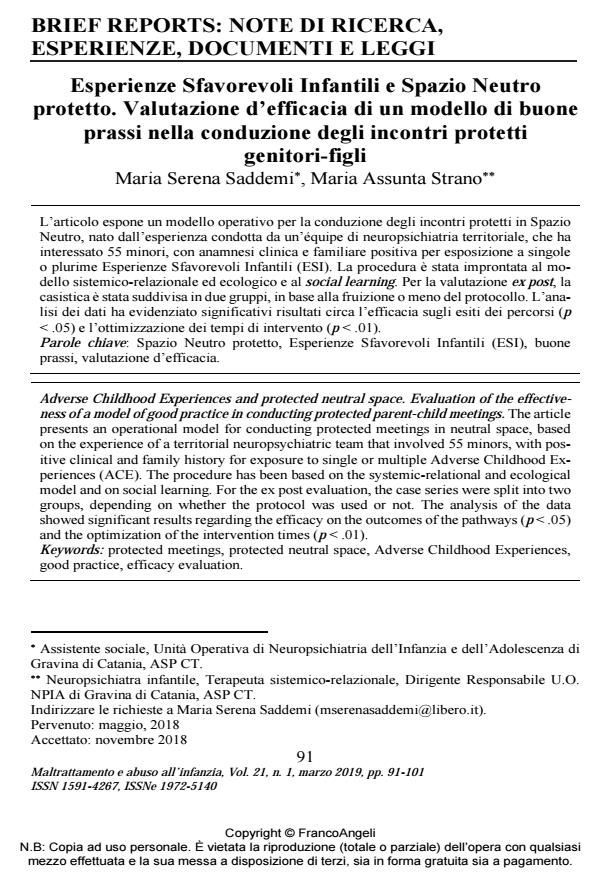Adverse Childhood Experiences and protected neutral space. Evaluation of the effective-ness of a model of good practice in conducting protected parent-child meetings.
Journal title MALTRATTAMENTO E ABUSO ALL’INFANZIA
Author/s Maria Serena Saddemi, Maria Assunta Strano
Publishing Year 2019 Issue 2019/1
Language Italian Pages 11 P. 91-101 File size 318 KB
DOI 10.3280/MAL2019-001007
DOI is like a bar code for intellectual property: to have more infomation
click here
Below, you can see the article first page
If you want to buy this article in PDF format, you can do it, following the instructions to buy download credits

FrancoAngeli is member of Publishers International Linking Association, Inc (PILA), a not-for-profit association which run the CrossRef service enabling links to and from online scholarly content.
The article presents an operational model for conducting protected meetings in neutral space, based on the experience of a territorial neuropsychiatric team that involved 55 mi-nors, with positive clinical and family history for exposure to single or multiple Adverse Childhood Experiences (ACE). The procedure has been based on the systemic-relational and ecological model and on social learning. For the ex post evaluation, the case series were split into two groups, depending on whether the protocol was used or not. The analysis of the data showed significant results regarding the efficacy on the outcomes of the pathways (p < .05) and the optimization of the intervention times (p < .01).
Keywords: Protected meetings, protected neutral space, Adverse Childhood Experiences, good practice, efficacy evaluation.
Maria Serena Saddemi, Maria Assunta Strano, Esperienze Sfavorevoli Infantili e Spazio Neutro protetto. Valutazione d’efficacia di un modello di buone prassi nella conduzione degli incontri protetti genitori-figli in "MALTRATTAMENTO E ABUSO ALL’INFANZIA" 1/2019, pp 91-101, DOI: 10.3280/MAL2019-001007